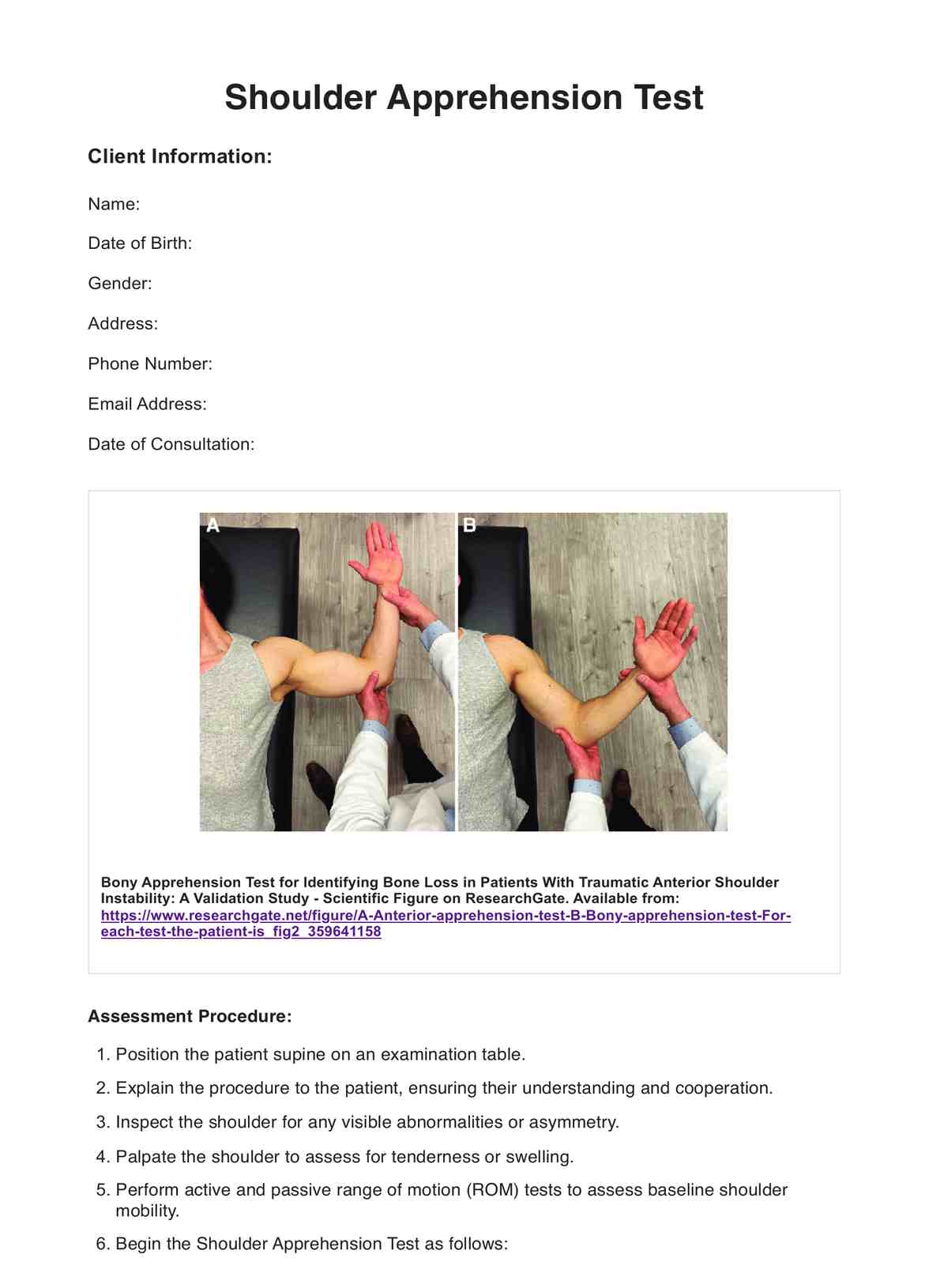A positive result on the Shoulder Apprehension Test suggests the presence of shoulder instability or an increased risk of dislocation.

Shoulder Apprehension Test
The Shoulder Apprehension Test evaluates joint stability and potential dislocation risks; a crucial diagnostic tool in assessing shoulder conditions.
Shoulder Apprehension Test Template
Commonly asked questions
The Shoulder Apprehension Test may cause some discomfort or apprehension in individuals with shoulder instability, but the healthcare provider performs the test cautiously to minimize any unnecessary pain.
The Shoulder Apprehension Test is part of the diagnostic process for shoulder instability, but it is typically used in conjunction with a thorough clinical history, physical examination, and possibly additional imaging or diagnostic tests.
EHR and practice management software
Get started for free
*No credit card required
Free
$0/usd
Unlimited clients
Telehealth
1GB of storage
Client portal text
Automated billing and online payments











